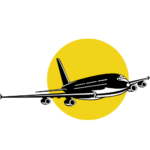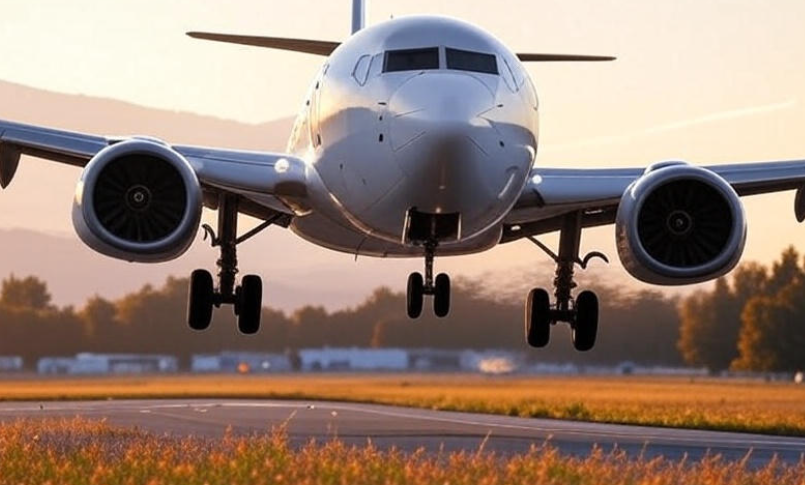Flying can be exciting but also nerve-wracking. Ever wondered why some flights feel smoother than others, especially during takeoff and landing? Believe it or not, there’s a lot of science behind it. From aerodynamics to human perception, every aspect is carefully designed to give passengers a safe and comfortable journey. Let’s dive in.
Why Takeoffs Can Feel Bumpy
Takeoff is when the airplane goes from sitting still on the runway to flying in the air. This is a critical phase because the plane is gaining speed while lifting off the ground. Pilots need to balance speed, angle, and engine power perfectly.
-
Acceleration: During takeoff, planes accelerate rapidly. Your body might feel pushed back into the seat – that’s called G-force.
-
Lift-off angle: The nose of the plane rises to generate lift. Too steep or too shallow, and you’ll feel a bump.
-
Wind & weather: Crosswinds or gusty weather can make takeoffs feel shaky, even if everything is safe.
How Pilots Make Takeoffs Smooth
Pilots are trained to handle various scenarios. They rely on instruments, real-time weather updates, and their experience. Some techniques include:
-
Adjusting thrust gradually instead of full power instantly.
-
Using flaps on wings to increase lift without needing extreme speed.
-
Coordinating with air traffic control for optimal runway choice.
Why Landings Are Tricky
Landing is often scarier for passengers because you’re descending from the sky at high speed. But behind the scenes, pilots are carefully controlling every movement.
-
Descent rate: Planes must descend at a steady pace to avoid hard landings.
-
Touchdown point: Landing too early or late on the runway can feel abrupt.
-
Runway friction: Braking and tire grip affect how smoothly the plane slows down.
Technology That Helps Smooth Takeoffs & Landings
Modern airplanes use amazing technology to make flights safer and more comfortable.
| Technology | Purpose | How it helps passengers |
|---|---|---|
| Autopilot & auto-throttle | Controls speed & descent | Reduces human error, smoother transitions |
| Wing flaps & spoilers | Adjust lift & drag | Gentle takeoffs & soft landings |
| Landing gear shock absorbers | Cushion landing impact | Less jolt when wheels hit the runway |
| Weather radar | Detects turbulence | Pilots can avoid rough air pockets |
Human Factors in Smooth Flights
It’s not just about the plane. Your body’s response also matters.
-
Seating position: Sitting over the wings can reduce the feeling of bumps.
-
Seatbelt usage: Helps your body stay steady during acceleration and landing.
-
Relaxation techniques: Deep breathing or listening to music can trick your brain into feeling smoother motion.
Why Sometimes Takeoffs or Landings Feel Rough
Even with all technology, some bumps are inevitable. Here’s why:
-
Turbulence: Caused by wind patterns, temperature changes, or nearby mountains.
-
Runway conditions: Wet or uneven runways can affect smoothness.
-
Aircraft weight: Heavier planes may feel more force during lift-off.
Tips for Passengers to Feel a Smoother Ride
You can also make takeoffs and landings more comfortable for yourself.
-
Choose seats wisely – wings are best for less movement.
-
Keep seatbelt fastened – even if the seatbelt sign is off, just in case.
-
Relax your body – stiff muscles feel every bump more.
-
Focus your mind elsewhere – read a book, watch a movie, or meditate.
Fun Fact ✈️
Did you know that most people feel turbulence more than the plane actually moves? Modern planes are extremely stable – the bumps are mostly air movement, not mechanical problems.
The Role of Weather in Smooth Flights
Weather is a huge factor. Pilots use advanced weather radar to predict turbulence, wind shear, or storms. Sometimes, they slightly delay takeoff or change altitude to ensure smoother air.
-
Crosswinds: These happen when wind blows perpendicular to the runway. Pilots adjust the plane angle to land straight without side slip.
-
Wind shear: A sudden change in wind speed can make landings feel rough. Pilots are trained to handle this safely.
The Physics of Lift and Drag
Smooth takeoffs and landings are all about controlling lift and drag.
-
Lift: Created by the wings, lift allows the plane to rise. Pilots adjust flap angles to get just enough lift.
-
Drag: Air resistance slows the plane. Managing drag is key during both takeoff (less drag helps speed up) and landing (more drag helps slow down).
How Airlines Train Pilots
Airlines spend thousands of hours training pilots to handle all possible situations. Simulators mimic bumpy weather, sudden engine issues, or tricky runways. This practice ensures pilots are ready to keep passengers safe and comfortable.
FAQs
Q: Why do planes sometimes bounce during landing?
A: This is called a “porpoise landing.” It happens when the plane hits the runway at a slight angle or with too much descent speed. Pilots correct it quickly, and it’s completely safe.
Q: Is turbulence dangerous?
A: Turbulence is usually uncomfortable, not dangerous. Modern planes are built to handle much stronger forces than passengers ever feel.
Q: Can pilots control turbulence?
A: Pilots can’t control turbulence itself, but they can change altitude or direction to minimize it.
Q: Why is landing sometimes scarier than takeoff?
A: During landing, the plane is closer to the ground and moving slower, making bumps feel stronger. Your brain also anticipates the touchdown, increasing anxiety.
Q: Are all planes equally smooth in takeoff and landing?
A: No, smaller planes feel bumps more, while large commercial jets usually have smoother experiences due to weight and design.
Conclusion
Smooth takeoffs and landings aren’t just luck—they are the result of advanced science, precise engineering, and skilled pilots. From controlling lift and drag to using the latest technology, every detail is planned. Passengers can also play a role in comfort by choosing seats wisely and staying relaxed. So next time your flight feels bumpy, remember, it’s all part of the complex and fascinating science of aviation! ✈️

